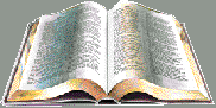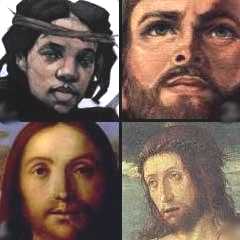Mary Suydam
![]() Department of Religion
Department of Religion
Mary Suydam
Religious Studies 225: The New Testament

Prof. Mary Suydam Spring 2014
Class: Tues-Thurs. 2: 40 - 4
Phone PBX 5067
Office: Ascension 11
Office Hours: T- Th 11-12 and 1:2:30
Email: suydam@kenyon.edu
Goals of the Course: This course is an introduction
to the New Testament, focusing primarily on the four gospels (Matthew, Mark, Luke, and John), and some of the letters
of Paul. We will also analyze books such as Acts, Hebrews, and the book of Revelations. We
will learn
how these books came to be written, who wrote them, and their intended
audiences. We will study how the New Testament
slowly assumed its final form. We will learn about some of the
methodologies (source, form, and redaction criticism)
that scholars use to study the New Testament. The New Testament is
critical to understanding the origins of Christianity.
We will study the many (and sometimes competing) approaches to
Christianity within the ancient world. We will particularly
focus upon differing New Testament views of Jesus and his message, and
the challenges it represented to established views. We will also study
other Christian writings from the ancient
world, such as other gospels, testaments, and books of Acts.

Required Texts:
Encounter with the New Testament. Russell Pregeant. Fortress Press, 2009.
Harper Collins Study Bible.
Gospel Parallels. B. Throckmorton (Nelson Press), 5th edition.
Lost Christianities. Bart Ehrman. (New York: Oxford University Press, 2005).
Suggested Texts (we will be reading portions of these texts):
Who Wrote the New Testament? Burton Mack. (San Francisco: Harper San Francisco, 1995).
Jesus: Apocalyptic Prophet. Bart Ehrman. (New York: Oxford University Press,).
There will also be E-res and Course Reserve Readings.
Class Format: This class is organized as a collaborative exploration with the professor as guide. There will be occasional presentations by the teacher. Classes will focus on serious discussion of the readings. You should come to class each day prepared to discuss the reading for that day. You should also bring the relevant reading materials. Plan especially on bringing the Bible and Gospel Parallels every day. Some classes will begin with a problem-solving or analytical exercise related to the topic to be discussed in class. Then we will discuss our theories and strategies. There will also be weekly written assignments (see below).
Course Requirements:
1. Attendance and Participation: 20%. Regular attendance is a requirement of this course. This course is structured as a collaborative exchange of information between students and professor. The format of the class is a combination of lecture and discussion, with emphasis on discussion and exploration of texts together. Active discussion of the topics is a critical component of this class. If you are present for every class but never say a word, that is a C. If you are sick you should not come to class. Instead email questions and responses about the reading prior to class and be sure to get notes from someone after the class.
2. Weekly writing assignments: 20% There will be weekly writing assignments each week to aid in preparing for discussions of the texts. These assignments will focus on the methodology for reading the texts and your discoveries as you apply these critical tools. NO LATE PAPERS.
3. Weekly Quizzes on the Reading: 10%: There will be weekly Moodle short quizzes to answer on the reading from the textbook, Encounter with the New Testament. Quizzes must be taken by class time as indicated.
3. Midterm: 15%.
This will be a review how scholars conduct a critical examination of a
portion of New Testament text. The Midterm is due Feb. 27. NO LATE PAPERS ACCEPTED.
4. Group Project: 20%. This project will allow you to apply what you have learned in the course to a specific topic related to contemporary debates about the New Testament. The reason there are debates is because there is conflicting evidence on these issues within the New Testament texts. As a group you will have to analyze the relevant texts for your topic, study some competing views about these texts, come to an informed decision about them, and present your findings to the rest of the class. For a list of topics and detailed instruction on this assignment, click Group Project Instructions. Class presentations will occupy the last week of class. For important dates click here. The information presented will be part of the material on the final exam. See also List of Group Members.
For grade criteria click here.
5. Final Exam: 15%. The
final exam will test your ability to think critically about the texts you have studied, including aspects of the
class presentations. It will be an open book exam. The final exam is Thursday, May 8, at 8:30 AM. I will offer an alternate early exam on Sunday, May 4.
Topics and Reading Assignments
Week 1: The New Testament World
Jan. 14: Introduction to the class; a short walk through the Roman world
Galatians 3: 4: While we were children, we were enslaved to the elemental powers of the world.
Assignment: gospel beginnings: compare the actual beginnings of each gospel (Matthew, Mark, Luke, and John) with your original ideas about how they begin or ought to begin. Write a 1-2 page paper about your reactions to this comparison: surprises, questions, issues you would like to know more about.
Jan. 16: The story of Israel; Gospel beginnings
Reading: Encounter with the New Testament, pp. 1-20.
Ehrman, Lost Christianities, Introduction
Harper Collins Study Bible, xxxix - xliii: "Strategies for Reading Scripture"
Who was Jesus? Images of Jesus in the 19th and 20th centuries
Film:From Jesus to Christ, part I
Gospel Beginnings
Week 2: Composition of the New Testament: Gospels
Jan. 21: Discovering the gospels; the triple tradition
Readings: Encounter with the New Testament , 25-50
E-res: Jesus, Apocalyptic Prophet (Bart Ehrman)
Schweitzer, The Quest for the Historical Jesus (Handout)
When were the gospels written?
Jan. 23: Understanding the triple tradition; the double tradition and Q
Reading: Encounter with the New Testament , 57-70
Assignment: The triple tradition: Gospel Parallels #52, pages 42-43
Who was Jesus? What was his historical context?
What's in the Triple Tradition?
Week 3: Q
Jan. 28 : Working with Q
Readings: The Lost Gospel of Q, chapter 5 (E-Res)
Gospel Parallels, #167, 2, 18, 19
Ehrman, Jesus, Apocalyptic Prophet, chapter 3, 41-53 (P/Class)
Jan. 30 : Form criticism
Readings: Ehrman, Lost Christianities, chapter 3
Encounter with the New Testament , 71-82
Assignment: The double tradition: Gospel Parallels #35 and 38.
Week 4: Paul
Feb. 4: Who was Paul?
Readings: Galatians 4:1-8; Galatians 5:16-26; I Thessalonians 5: 9-26;
Encounter with the New Testament , 85-101
Film: From Jesus to Christ, part 2
Feb. 6: Paul and other Christians; responses to the resurrection
Readings: Ehrman, Lost Christianities, chapter 2
Encounter with the New Testament ,200-243
Paul's First Letter to the Corinthians
Week 5: Paul and Mark
Feb. 11: Understanding Paul's context
Encounter with the New Testament , 244-268
Assignment: Pauline terminology
Feb. 13: Understanding Mark's context: the Jewish war and the destruction of the Temple
Encounter with the New Testament , 104-108
Jewish and Christian Responses to the Destruction
Gospel Parallels, #91, 93, 95
Week 6: The Gospel of Mark
Feb. 18: The Secret Messiah
Readings: Encounter with the New Testament , 111-116 and 124-125, "Mark and Liberation"
Gospel of Mark, chapters 1-6
Feb. 20: Miracle and controversy stories
Readings: Gospel of Mark, chapters 7-12
Encounter with the New Testament ,116-119
Ehrman, Lost Christianities, chapter 4
The Structure of Mark, Chapters 6-9
The "James" Ossuary Controversy
MIDTERM HANDED OUT IN CLASS.
Week 7: Mark Continued: the Passion Narrative
Feb. 25:
The Structure of Mark: Chapters 11-13
Reading: Gospel of Mark, chapters 13-16
Encounter with the New Testament , 119-127
Assignment: Mark's Passion Narrative
Feb. 27 : Passion Narrative continued
Mark's Passion Narrative: Class insights
Film: From Jesus to Christ, part 3
Structure of Mark: Chapters 14-16
Midterm due Thursday, Feb. 27
Choose Topics for Group Presentation.
-------------------------------------SPRING BREAK ------------------------------------------
Week 8: Matthew
March 18:
Readings: Encounter with the New Testament , 128-137
Matthew, chapters 1-7; 20: 1-16
Gospel Parallels, #59, 60, 63, 68
The Gospel of Matthew: Background and Motifs
March 20:
Readings: Encounter with the New Testament , 138-144
Matthew, chapters 24-28 (and corresponding Gospel Parallels 227-231)
Lost Christianities, chapter 5
Week 9: Luke
March 25:
Readings: Encounter with the New Testament , 147-157
Luke, chapters 1-2; Gospel Parallels E-L
Luke, chapters 3-9
Factors contributing to the diversity of Christian groups
March 27:
Readings: Encounter with the New Testament , 157-173
Luke, chapters 10-16; Gospel Parallels 139-141, 143-144, 173-174, 177
Luke, chapters 21-22; Gospel Parallels 214, 238-240, 244-246, 249-250, 253, CC, DD, EE
Ehrman, Jesus, Apocalyptic Prophet, chapters 8-10 (Course Reserve)
Assignment for Thursday: Themes in Luke
Week 10 and 11: John
April 1 : The cosmic Christ
Readings: Encounter with the New Testament , 174-186
John, chapters 1-4
Structure and Features of the Fourth Gospel
April 3: Seeing is believing
Readings: John, chapters 4-9
Encounter with the New Testament , 186-192
Robert Kysar, John, the Maverick Gospel, chapters 3 and 4 (Online through Netlibrary)
Study Assignment for Tuesday: Johannine Dualism
April 8: John and Qumran
Readings: John, chapters 10-16
Robert Kysar, John, the Maverick Gospel, chapter 2 (Online through Netlibrary)
Study Assignment : Themes in John
Groups 1 and 2: Meet with instructor to go over data for group presentations
April 10: The farewell discourse
Readings: John, chapters 13-17
Ehrman, Lost Christianities, chapter 6
Study Assignment for Thursday: John's Passion Narrative
Week 12: The New Testament in context: Acts
April 15 and 17:
Study Assignment for Tuesday: Read the first four chapters of the Book of Acts. Jot down three major themes that are established.
Read also: E-res: Mack, Who Wrote the New Testament, chapter 9: "Inventing Apostolic Traditions"
Ehrman, Lost Christianities, chapter 7 and 8
Acts of the Apostles: Sequence of Events
Acts of the Apostles: Myth, Fiction, Tradition
Study Assignment for Thursday: Read the book of Acts, chapters 9-15.
Groups 1 and 2: Meet with instructor to go over data for group presentations.
Week 13: Early Christian Communities
April 22: Authority and Orthodoxy in the 2nd and 3rd centuries
I Timothy, Titus, and James
Encounter with the New Testament , 279-283, 285-291: Keeping Paul's Legacy
E-Res: Pagels, Gnostic Gospels, "The Controversy over Christ's Resurrection"
The Pastoral Epistles and James
Arguments over Authority in the Second Century
April 24: Putting the New Testament Together
Readings: Encounter with the New Testament , 306-315, 271-279
Lost Christianities, chapter 11
Excerpts from The Da Vinci Code (E-Res)
Assignment: Spot the Whoppers
Da Vinci's Last Supper
April 27-29: Dress Rehearsal: Groups 3 and 4(outside class)
Week 14: Other NT Writings: Colossians andRevelations
April 29 : Colossians
Readings: The book of Colossians (4 chapters)
Lost Christianities, chapter 1
Class Presentation: The New Testament and Family Values
May 1: Revelations
Readings: Revelations 1-7, 17-22
Lost Christianities, chapter 12
Battle hymn of the republic (performance)
Battle hymn of the republic (lyrics)
Class Presentation: May 1 : The New Testament: Peace or War?